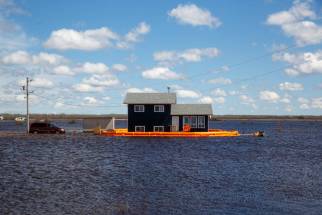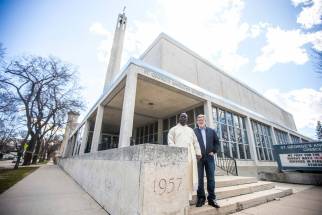Staying put, staying strong in Peguis despite flooding
Read this article for free:
or
Already have an account? Log in here »
To continue reading, please subscribe:
Monthly Digital Subscription
$0 for the first 4 weeks*
- Enjoy unlimited reading on winnipegfreepress.com
- Read the E-Edition, our digital replica newspaper
- Access News Break, our award-winning app
- Play interactive puzzles
*No charge for 4 weeks then price increases to the regular rate of $19.00 plus GST every four weeks. Offer available to new and qualified returning subscribers only. Cancel any time.
Monthly Digital Subscription
$4.75/week*
- Enjoy unlimited reading on winnipegfreepress.com
- Read the E-Edition, our digital replica newspaper
- Access News Break, our award-winning app
- Play interactive puzzles
*Billed as $19 plus GST every four weeks. Cancel any time.
To continue reading, please subscribe:
Add Free Press access to your Brandon Sun subscription for only an additional
$1 for the first 4 weeks*
*Your next subscription payment will increase by $1.00 and you will be charged $16.99 plus GST for four weeks. After four weeks, your payment will increase to $23.99 plus GST every four weeks.
Read unlimited articles for free today:
or
Already have an account? Log in here »
Hey there, time traveller!
This article was published 10/05/2022 (1309 days ago), so information in it may no longer be current.
PEGUIS FIRST NATION — On a street now under water, a family waits out the flood that has devastated their community on the other side of a sandbag wall.
Bertha Therrien, her two children, brother Adam Yaroshinski and mother Gladys Yaroshinski are happy to be under the same roof again. Just days earlier, they were living at the nearby Peguis Al-Care Treatment Centre, where Therrien and Gladys work, because flooding made it impossible for them to come and go.
They spent that week showering, sleeping and working at the centre, and moved back home when they were able to.
With stacks of sandbags surrounding their residence and an all-terrain vehicle in place of a car, they may be able to live at home but they’re not out of the water yet.
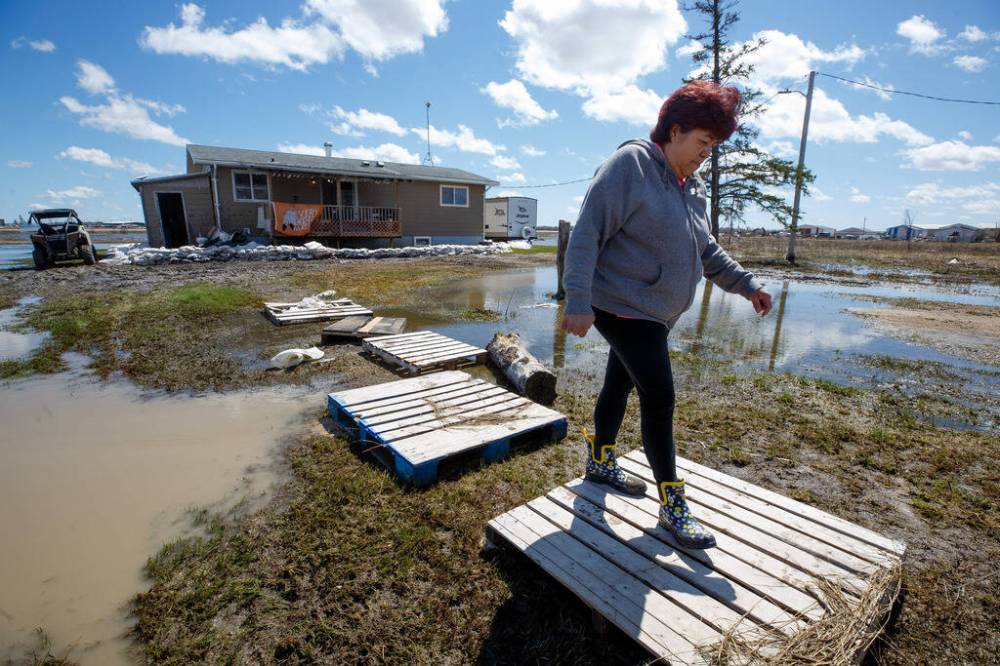
Rather, getting water where they want it to go has proven to be impossible.
“They said they were shutting off the water for 10 minutes — that was 10 days ago,” Adam, 46, told the Free Press.
The family has been forced to adapt. Adam hauls water to his family and his aunt down the street so they can flush toilets. The treatment centre is just across the street, so the family showers there. The water has lowered a little, Therrien, 49, said, but she’s never seen it this strong.
“It was worse than this — the water was just completely right up to the top of the sandbags,” she said. “Our house always floods, but it never floods this bad.”
They could have fled to relief centres but said they did that during the last major flooding event in 2014, and it was a painful process.
“It was worse than this– the water was just completely right up to the top of the sandbags… Our house always floods, but it never floods this bad.” – Bertha Therrien
“When we had the last evacuation, when we had no power, we went to the city and — ugh,” Therrien said, waving her hand dismissively.
“We didn’t like it. We had to keep hopping and hopping to different hotels, and my mom said, ‘Ah, we’ll just go home.’ So what if we’ve got no power? It’s better than having to travel all over the place in the city.”
Not everyone had the choice. Therrien said her nearby cousin was forced to leave home because she’s nine months pregnant and her home has flooded.
“She’s not even going to have a place to stay when she comes home,” she said. “They’re going to have to fix it because of all the water damage. She can’t bring a baby back here.”
Therrien is still going to work across the road and the family has no plans to leave, even with concerns the water would get higher later in the week. People check in on each other around the area, and that’s gotten them through, she said.
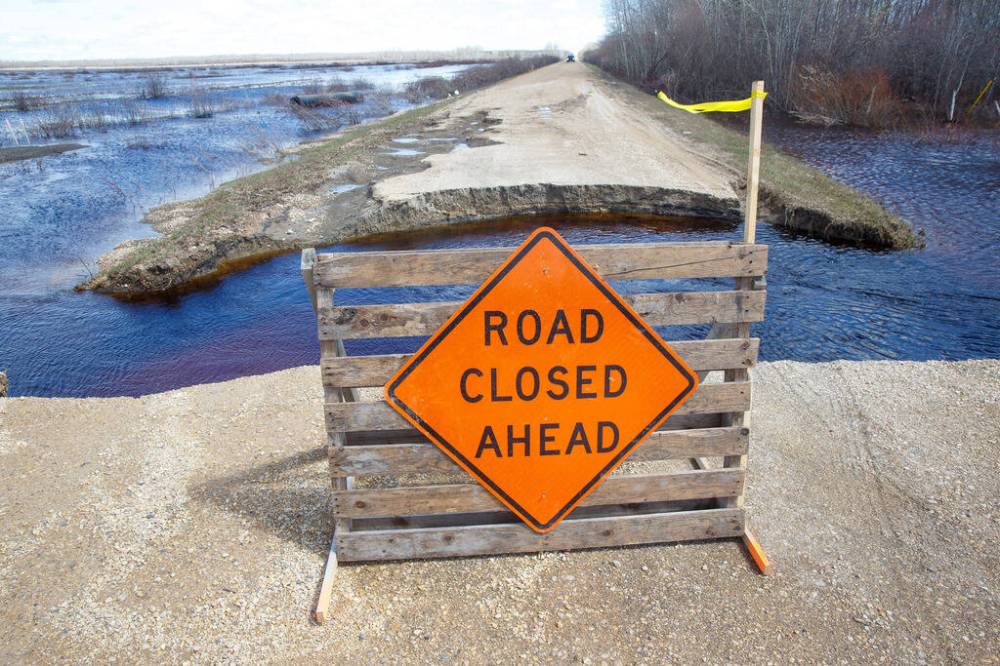
“We’ll just have to learn to adapt, learn to build it back up somehow and prepare for next time.”
In the most-affected areas of the 5,000-person community, there’s brown water and mud as far as the eye can see. Abandoned sheds, play structures and vehicles have succumbed to the rising water in some spots. Deserted homes and quiet streets make it obvious that more than 1,500 residents have temporarily fled.
On Tuesday morning, there’s a flash of rain, but then sun and clear skies — a quick reprieve from a hellish 11 days of flood fighting, Peguis Chief Glenn Hudson said.
“People are fatigued, people are tired. They can be emotional, I’ll say, because their homes are impacted,” he said.
“People are fatigued, people are tired. They can be emotional, I’ll say, because their homes are impacted.” – Peguis Chief Glenn Hudson
Water levels have receded, so the focus is now on mitigating inland flooding, protecting essential infrastructure such as the local pharmacy and grocery store, and keeping the provincial road — the main way out of Peguis — safe and clear.
It might not be so easy to work on these problems in the coming days: the forecast calls for more rain, possibly enough to raise river levels a foot.
“We’re basically preparing for our second flood event in two weeks,” the chief said.
Around 200 Peguis homes have been lost entirely and some 700 have been damaged. In an ideal situation, Hudson said, he would’ve liked to see around 400 more people evacuate who have chosen to stay home and try their luck.
“People want to stay back, unfortunately. I don’t criticize that because that’s their home… they want to protect that.”
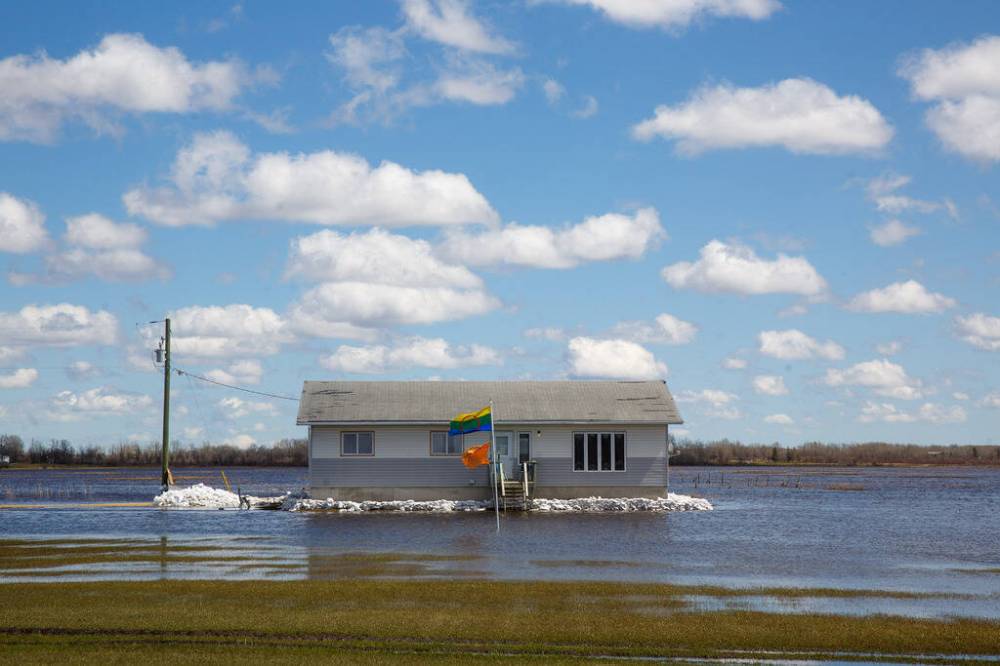
The First Nation located some 190 km north of Winnipeg has had to act fast to mitigate dire situations multiple times in the brief period since the flood began. A medevac helicopter, hired by Peguis, is being used multiple times a day to rescue people who need medical attention but are stranded in homes.
In just its first few hours in service, Hudson said, paramedics lifted out a 17-day-old baby from a flood-locked home.
When it’s not in use, it sits at the Peguis Fire Hall, where volunteers from within the First Nation and surrounding communities work to protect it from rising water.
While many of the people volunteering at the fire hall Tuesday could be sandbagging their own homes, they were out protecting the first line of support for stranded residents, said Stefan Zueff, ambulance superintendent at Peguis.
“We all work in this community, and we have a bit of a connection with this community… Our morale is great because we see how inspiring the residents of Peguis First Nation are.”
Around 100 volunteers have come in from surrounding communities to help.
“We all work in this community, and we have a bit of a connection with this community… Our morale is great because we see how inspiring the residents of Peguis First Nation are.” – Stefan Zueff
There were six medevac rescue trips Monday alone, and one at 4 a.m. Tuesday.
The worries don’t necessarily end when they’re out of flooded areas, Zueff said. Centres in Winnipeg help evacuees when they arrive, and while he commended their work, Zueff said people’s needs can fall through the cracks.
“We had a member that, for three days, didn’t have insulin.”
While the 2022 flood has been constantly referred to as a once-in-a-century occurrence, it is the fourth major flood in 12 years in Peguis First Nation. For a while, Hudson said, it seemed like no one was listening.
“It seemed like there was no movement there for a while in terms of these issues,” the chief said.
He’s optimistic now, and hopes the continued lobbying from Peguis leadership to receive more support at the provincial and federal levels for long-term flood mitigation will fall on open ears.
“I think that there’s a commitment there from people to act now.”
malak.abas@freepress.mb.ca


Our newsroom depends on a growing audience of readers to power our journalism. If you are not a paid reader, please consider becoming a subscriber.
Our newsroom depends on its audience of readers to power our journalism. Thank you for your support.
History
Updated on Wednesday, May 11, 2022 8:27 AM CDT: Adds to headline





